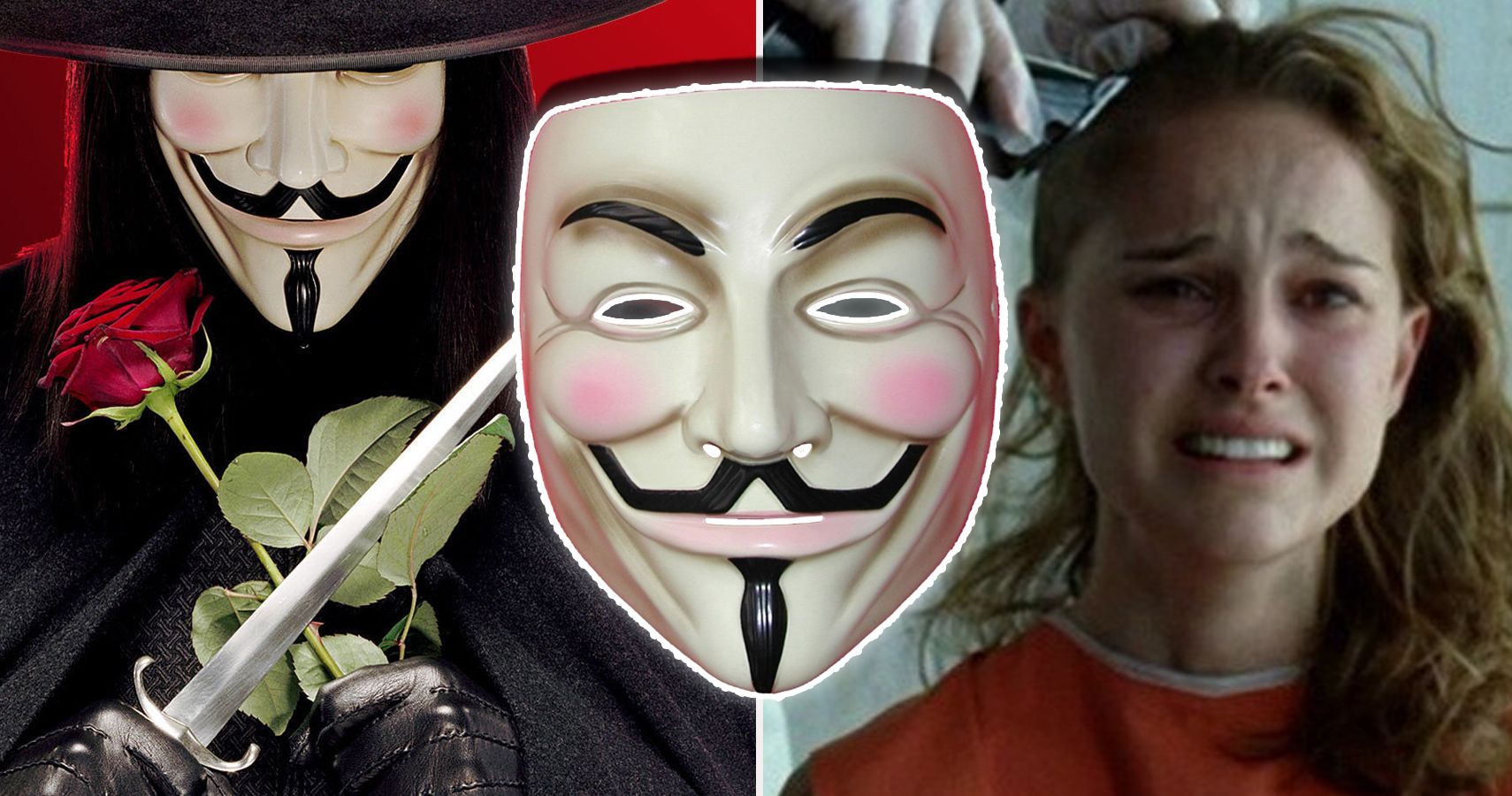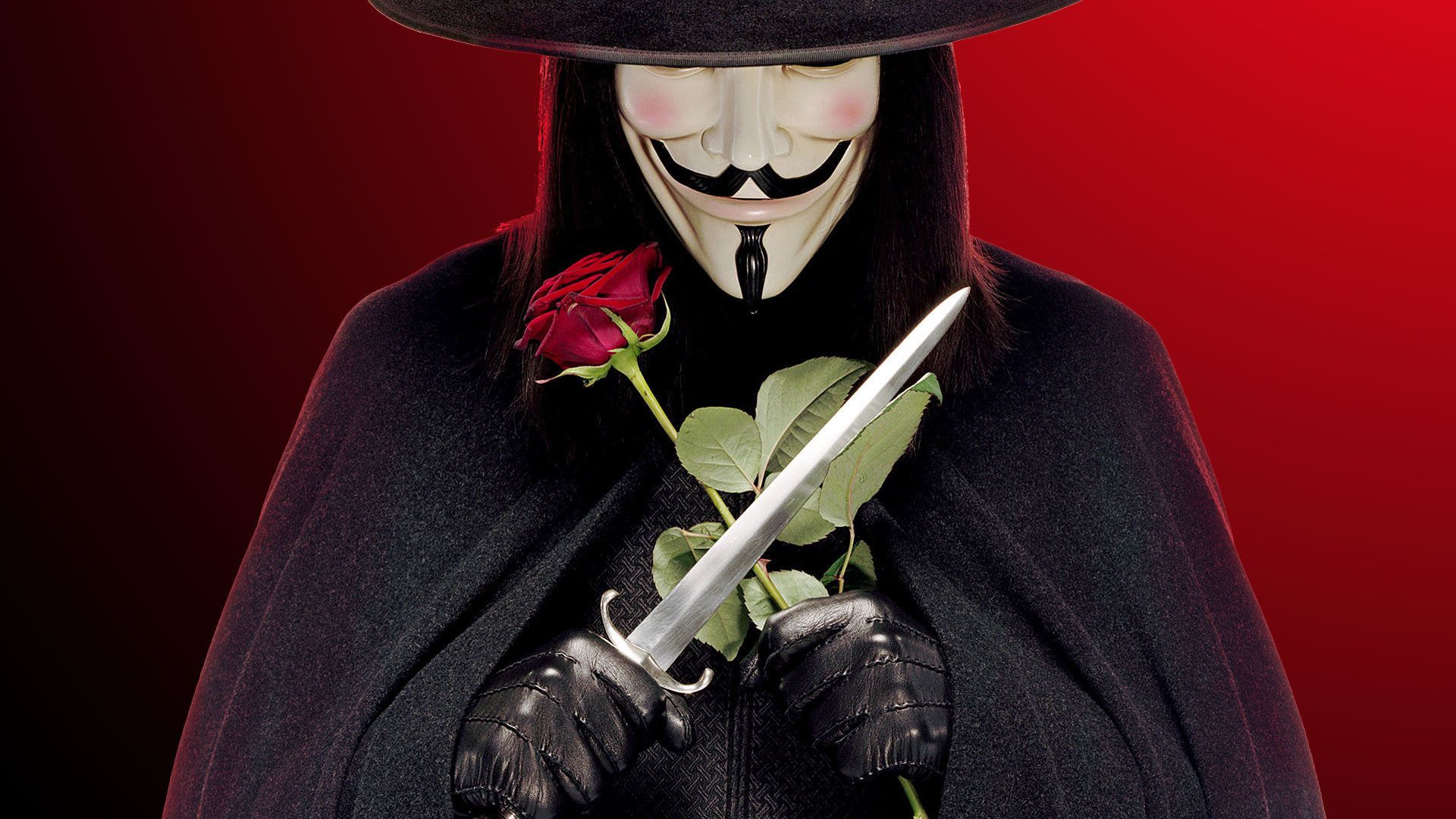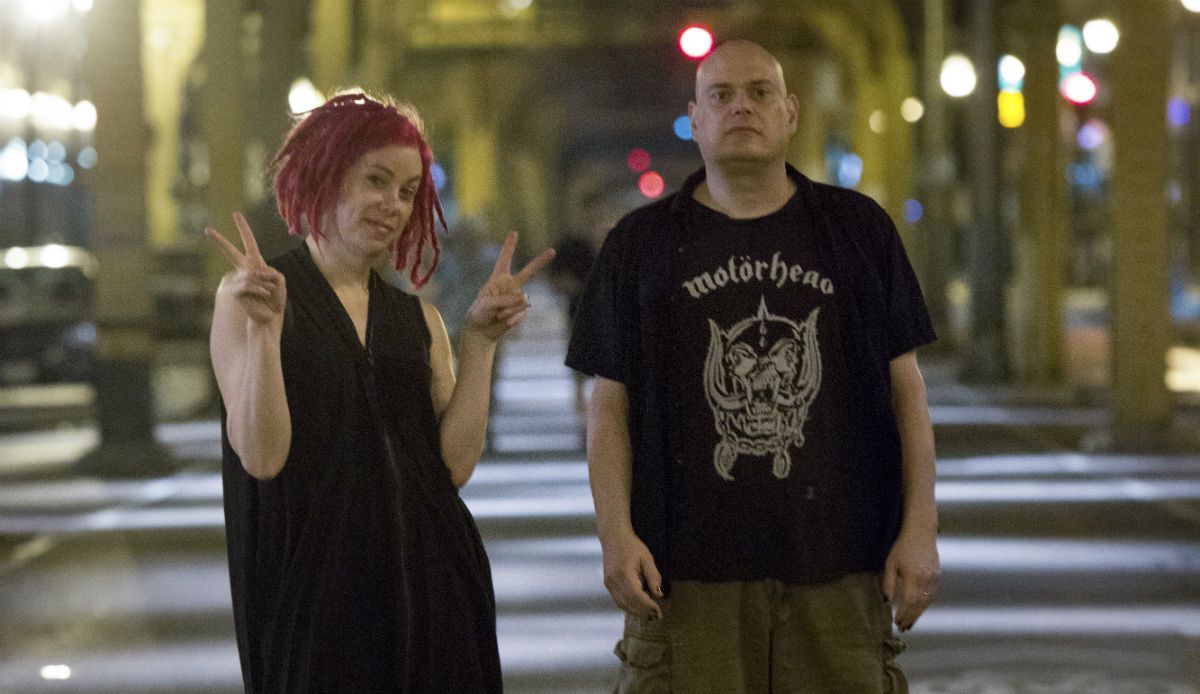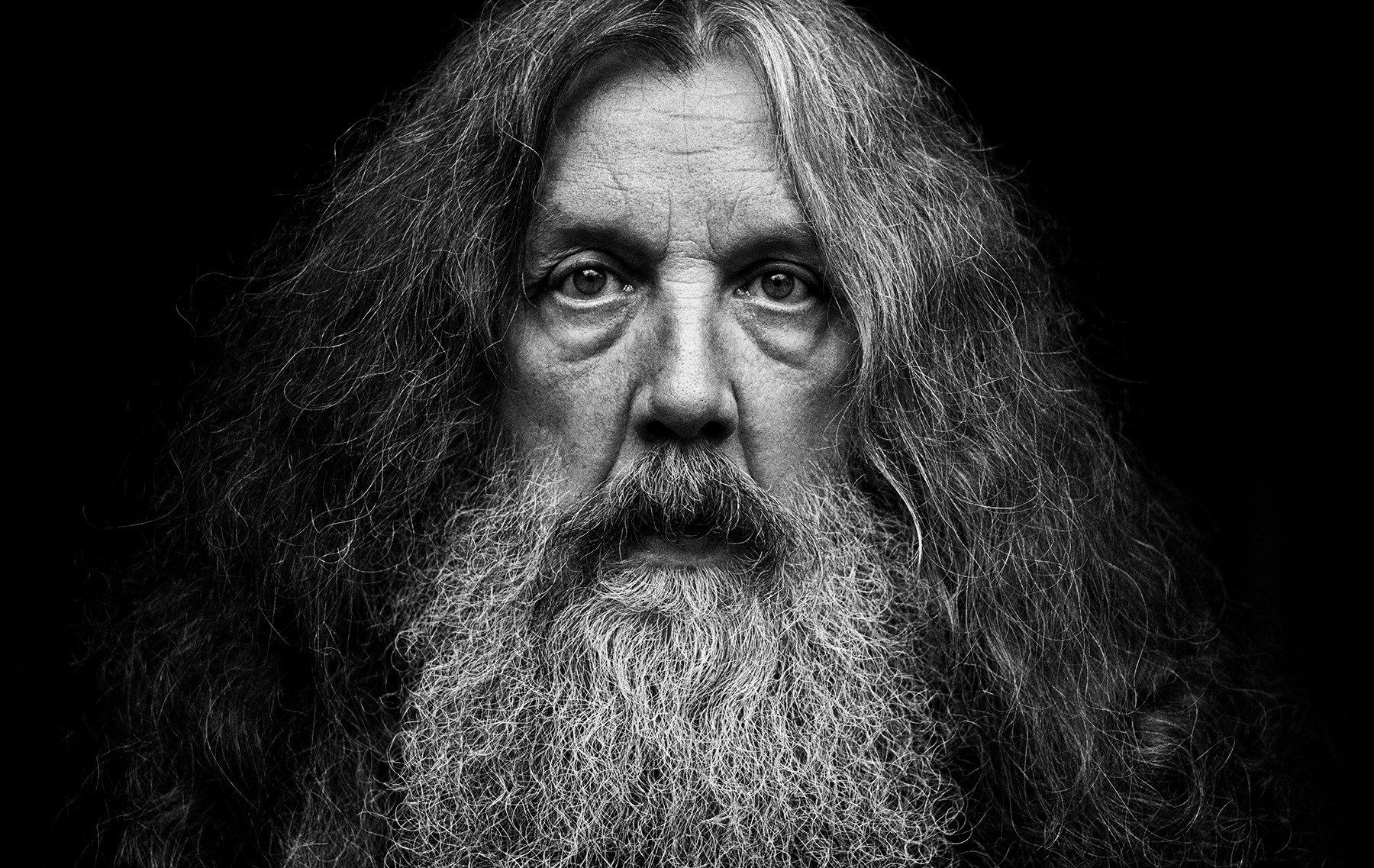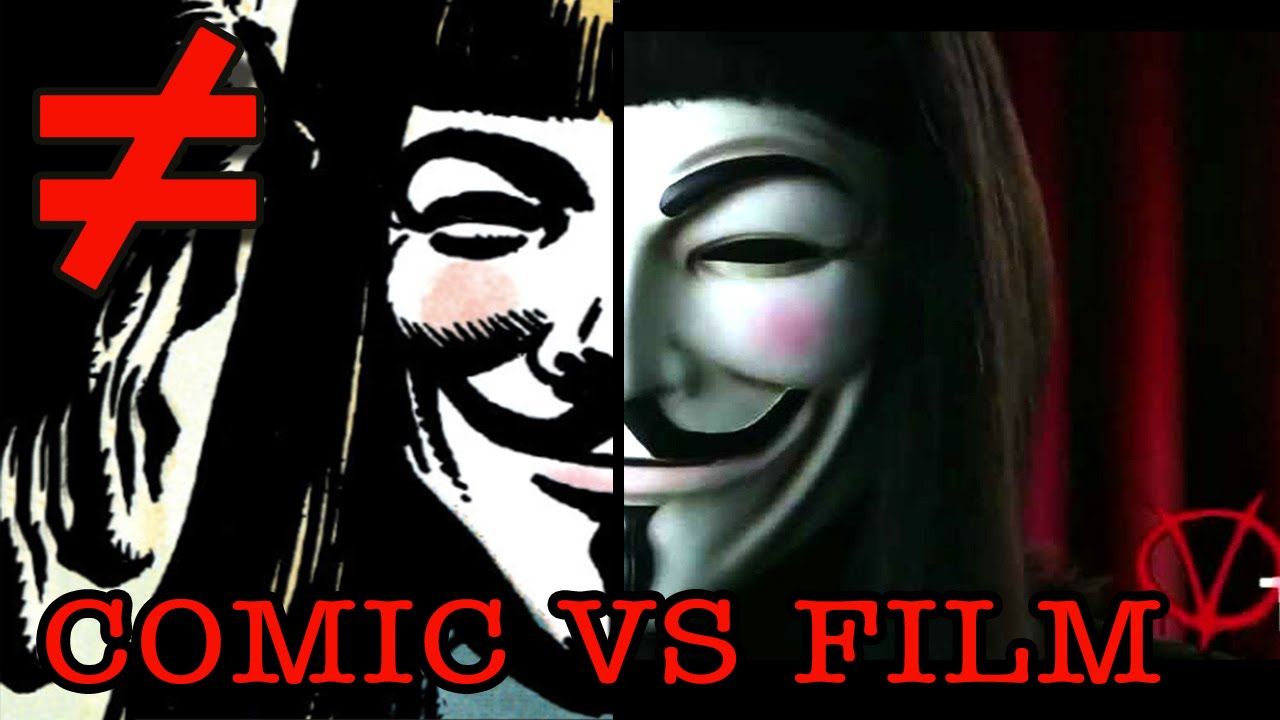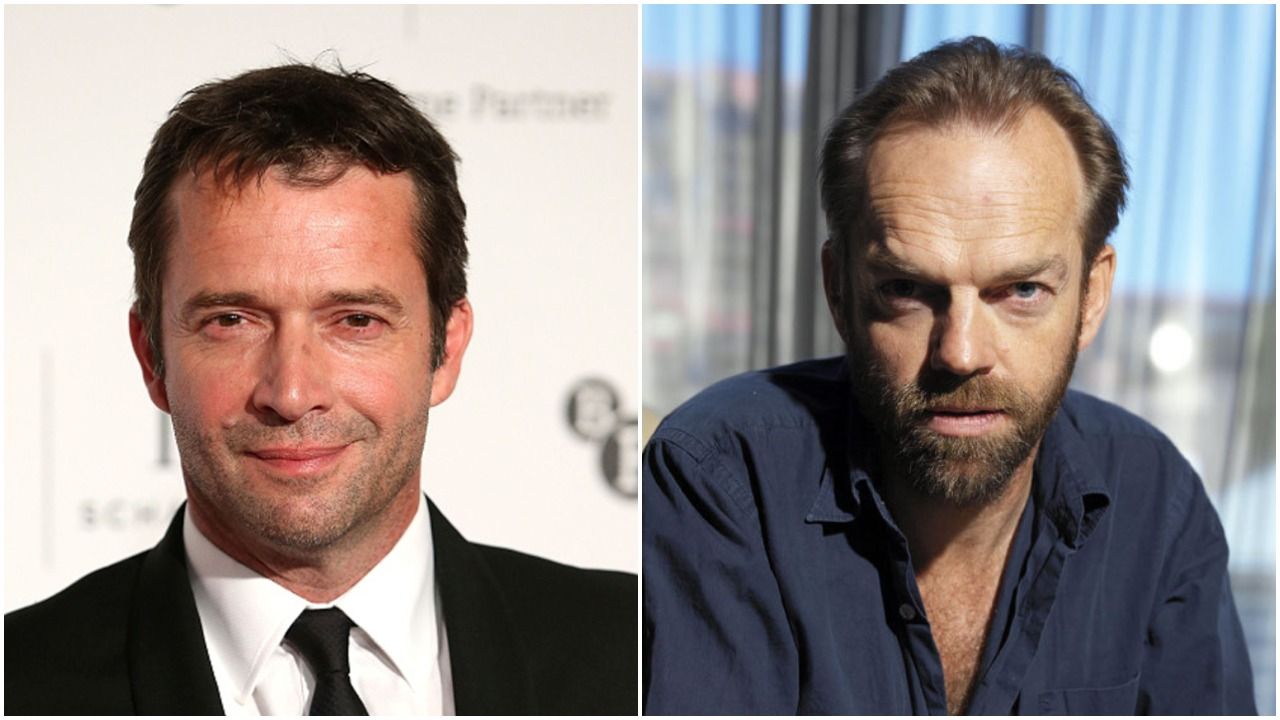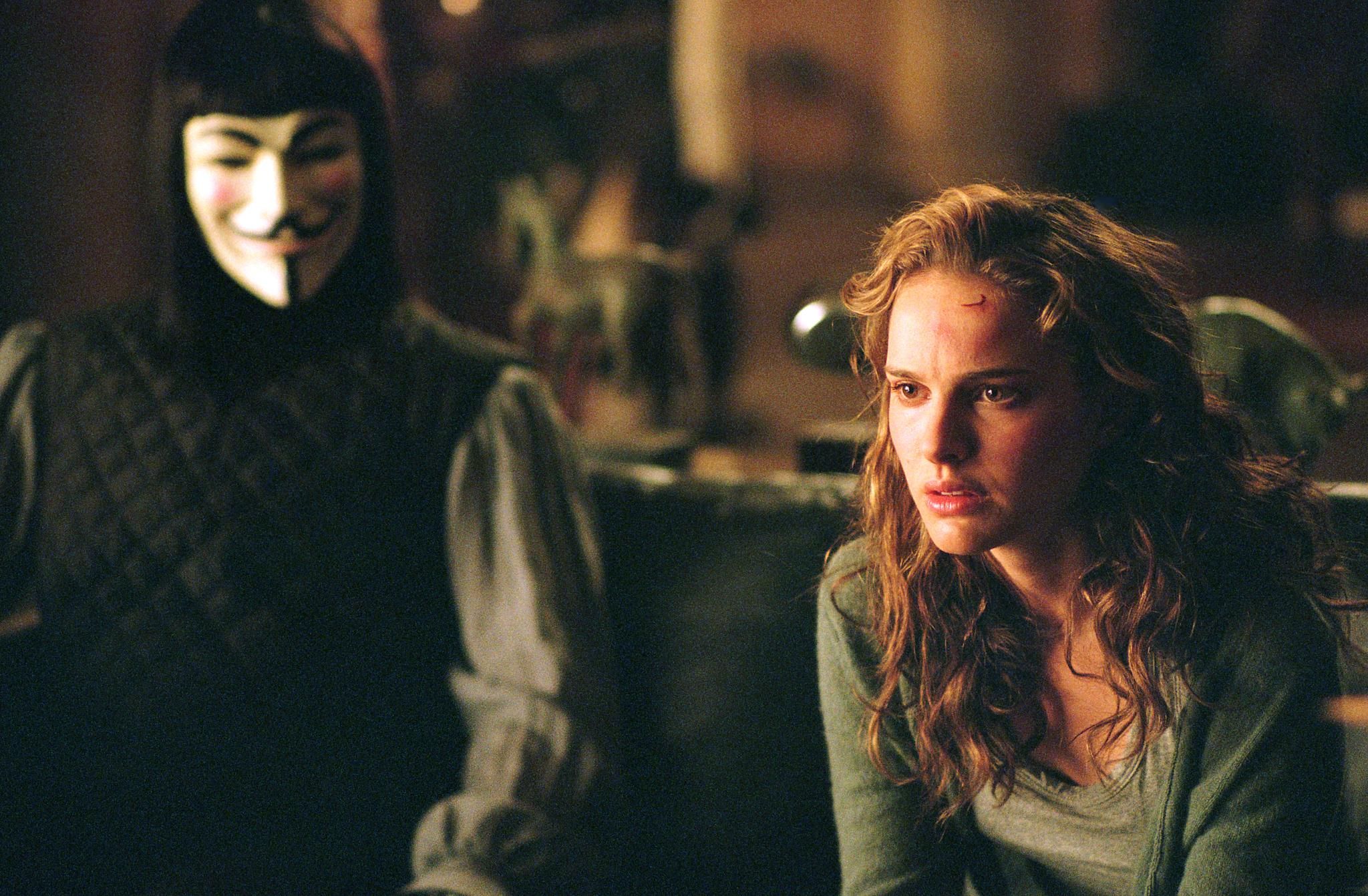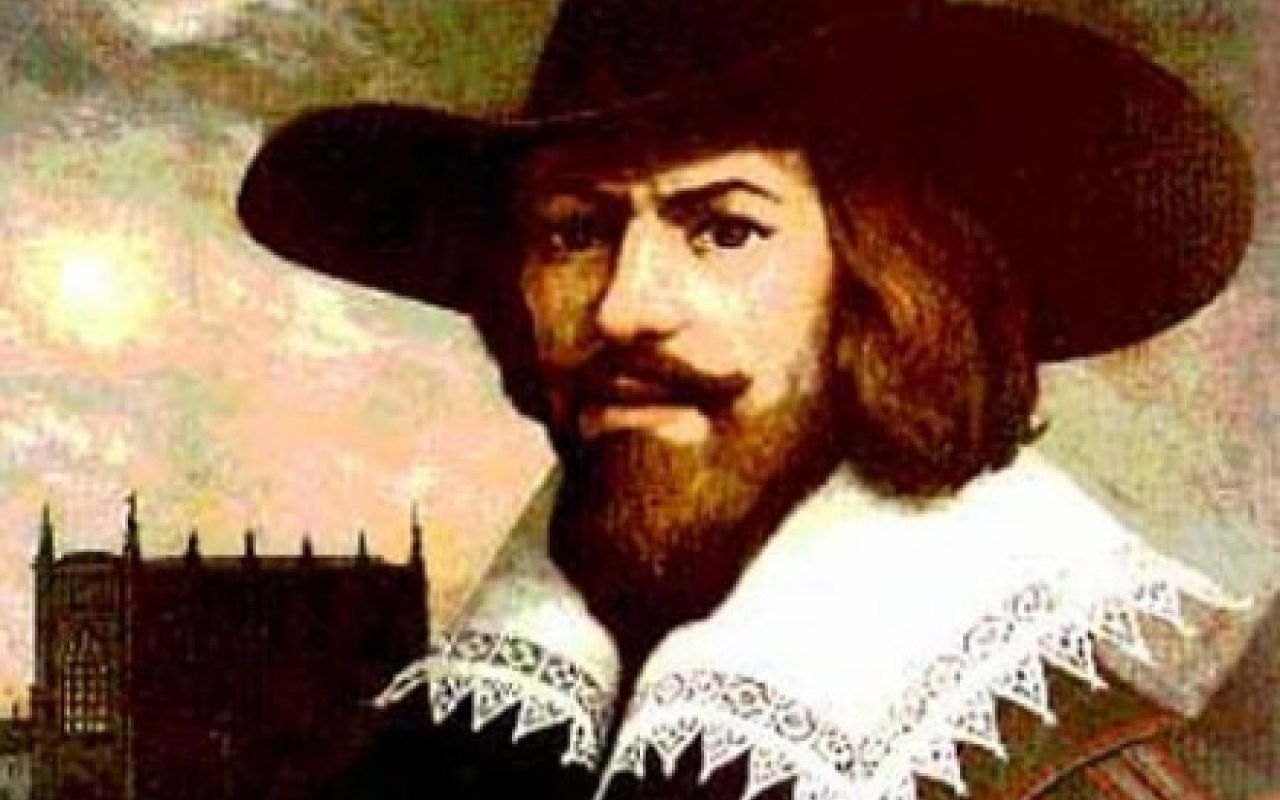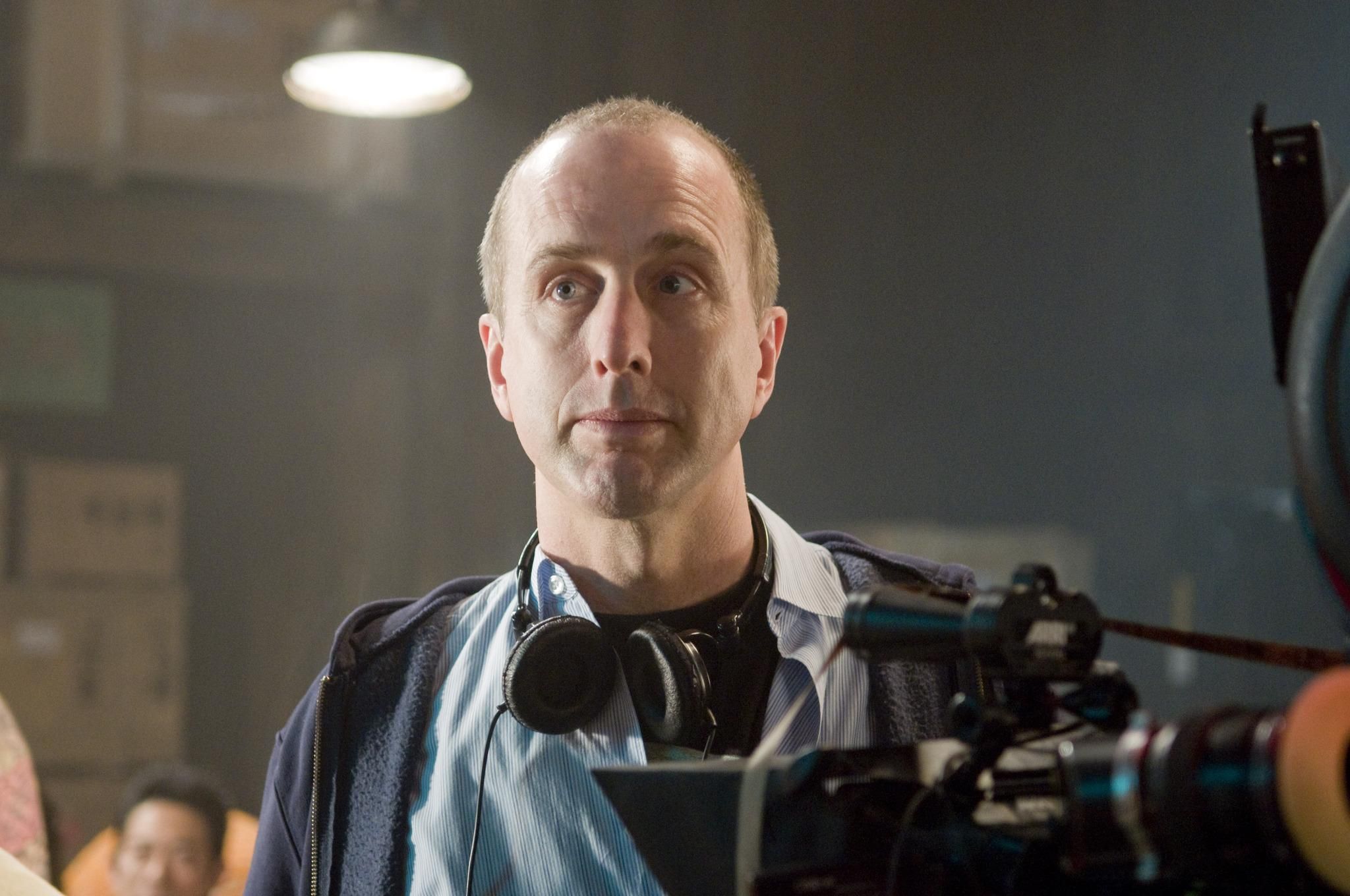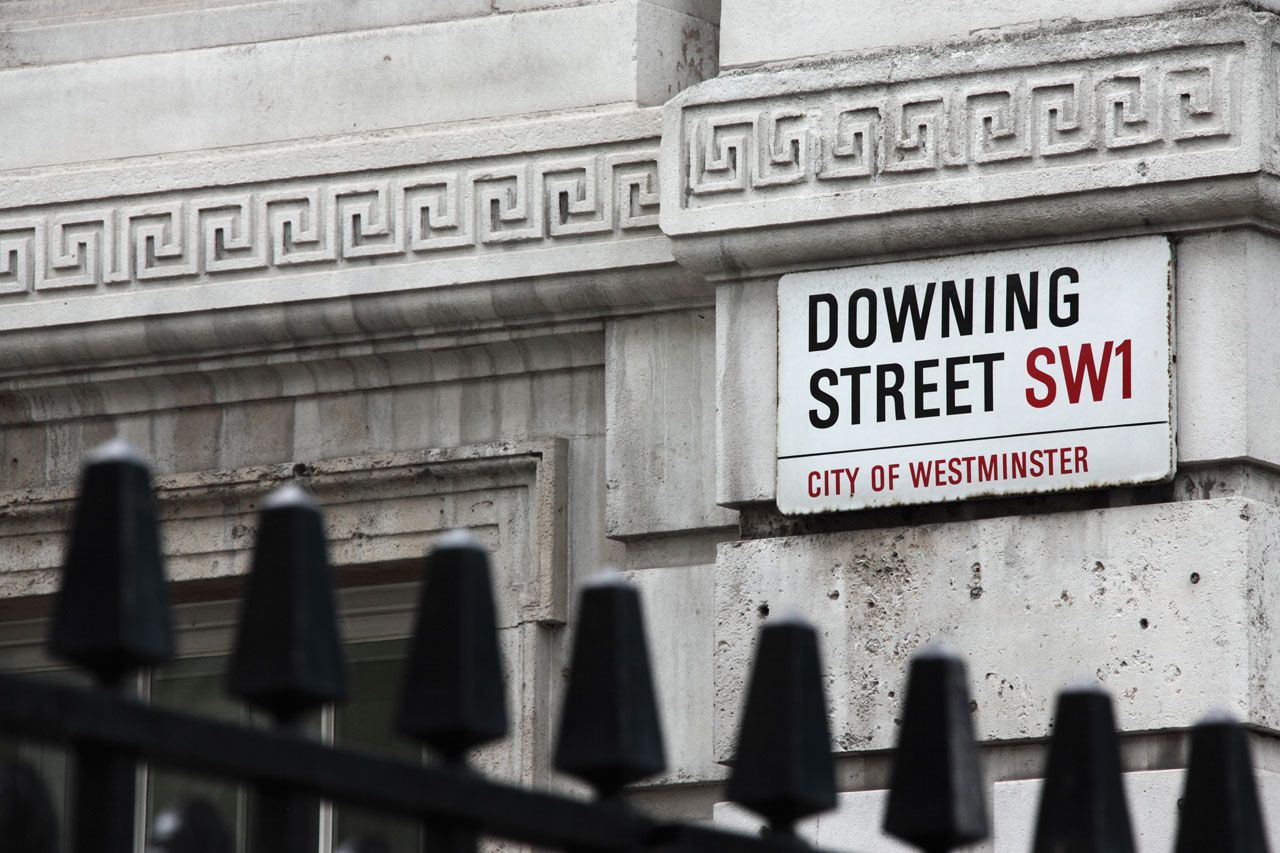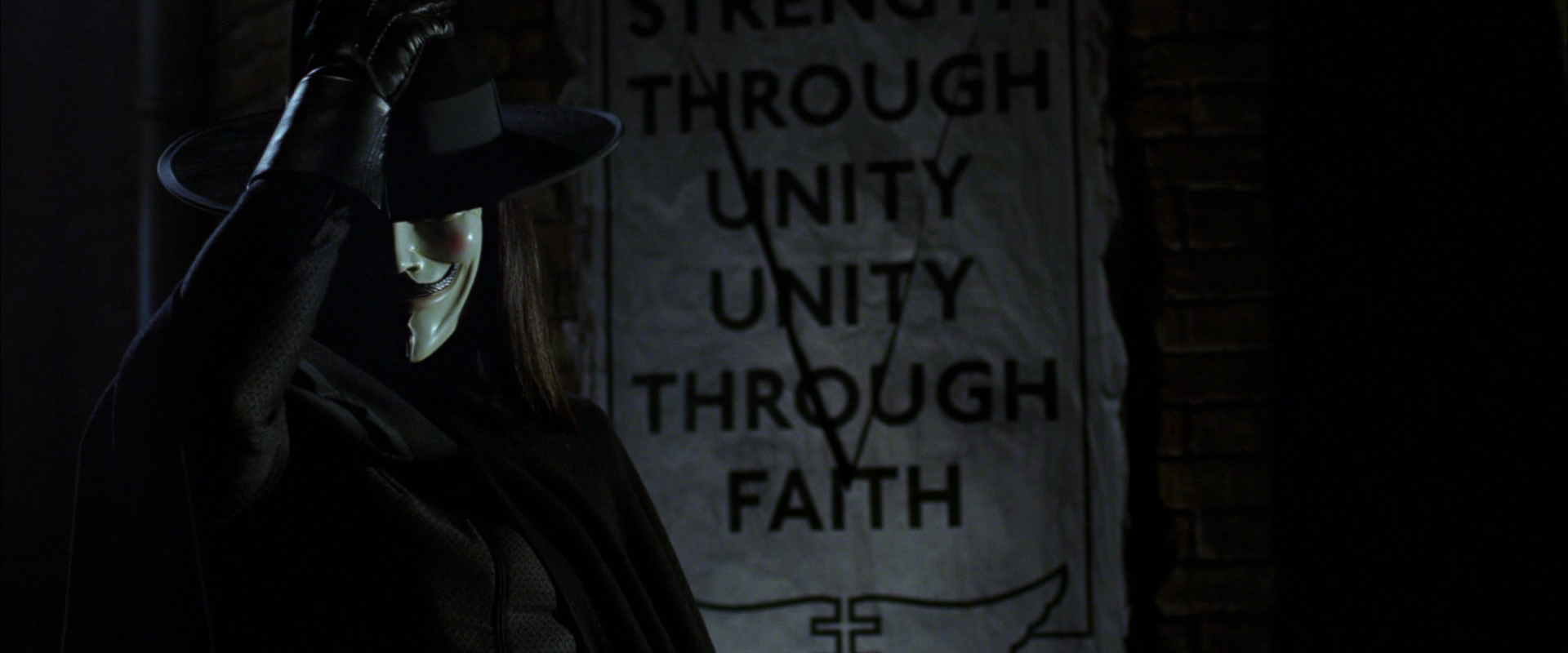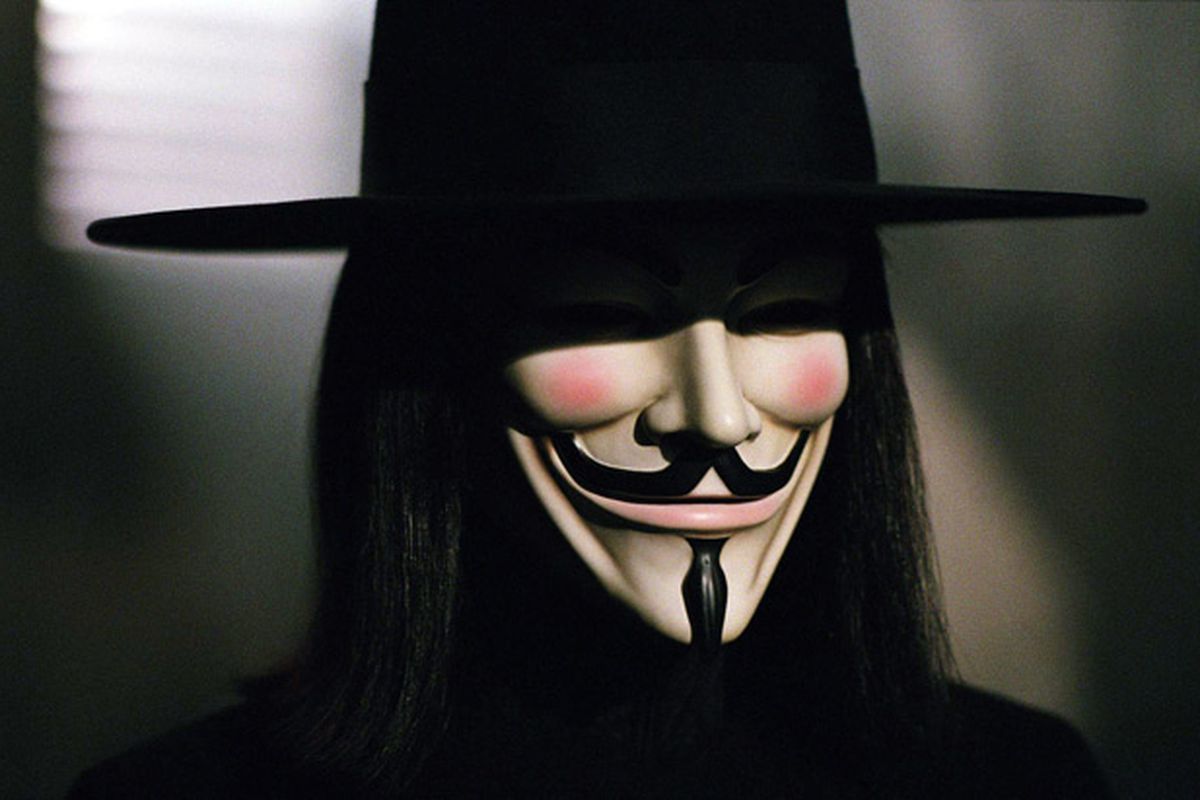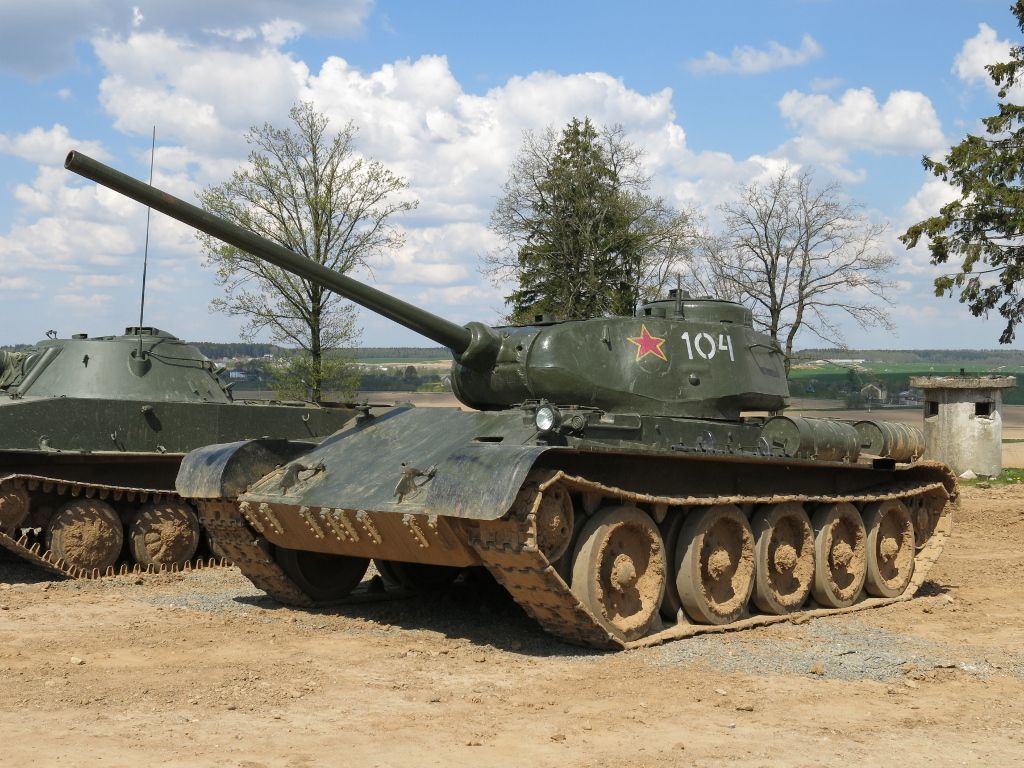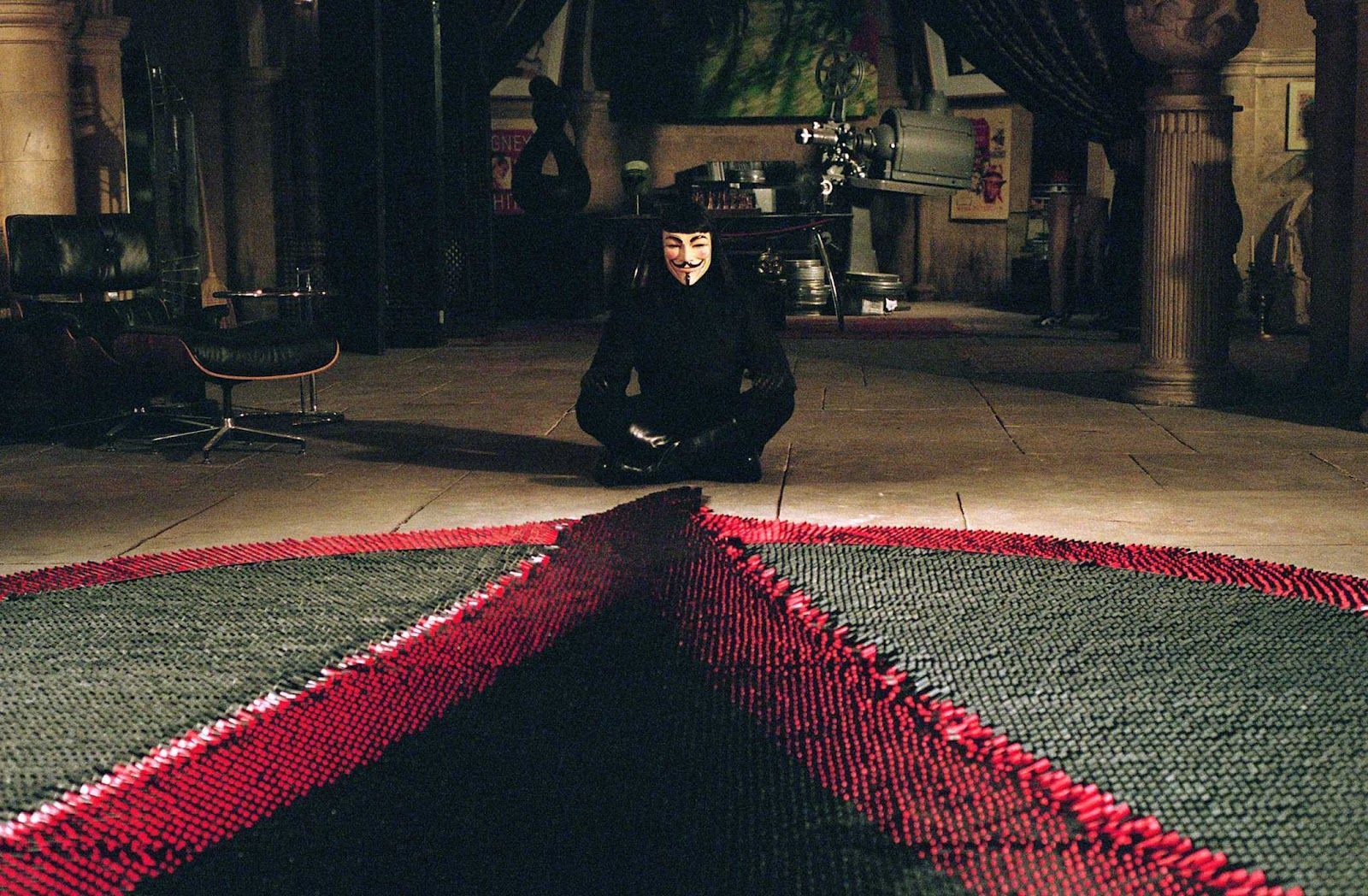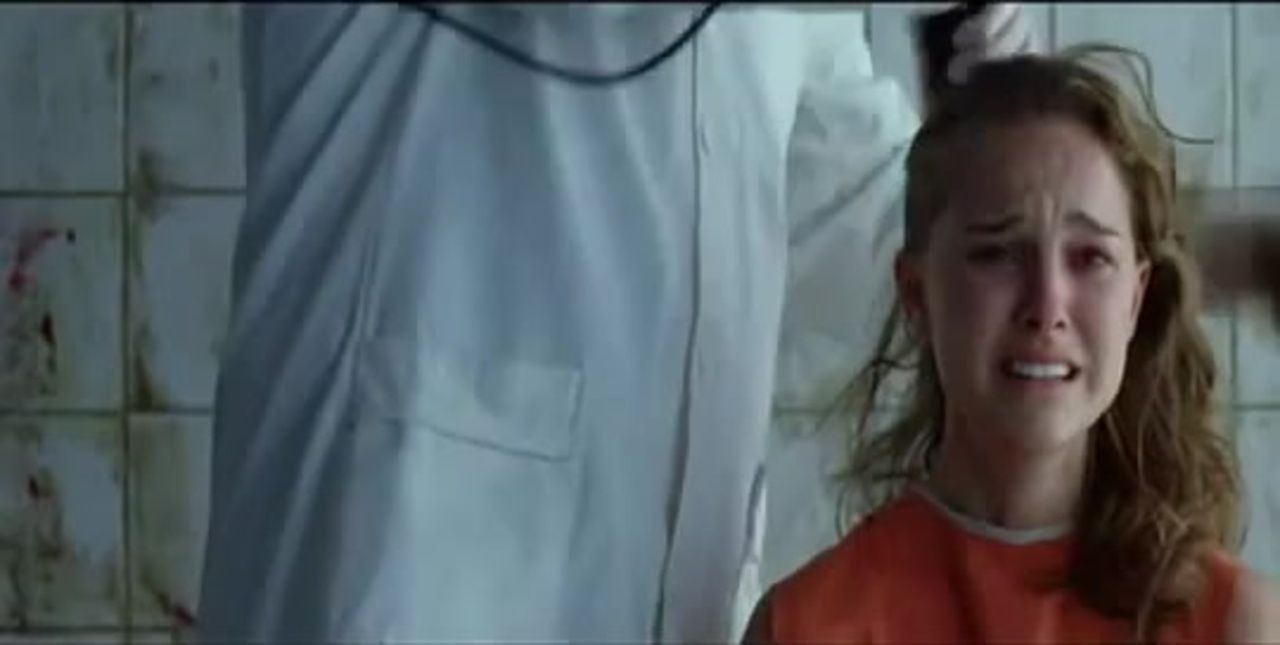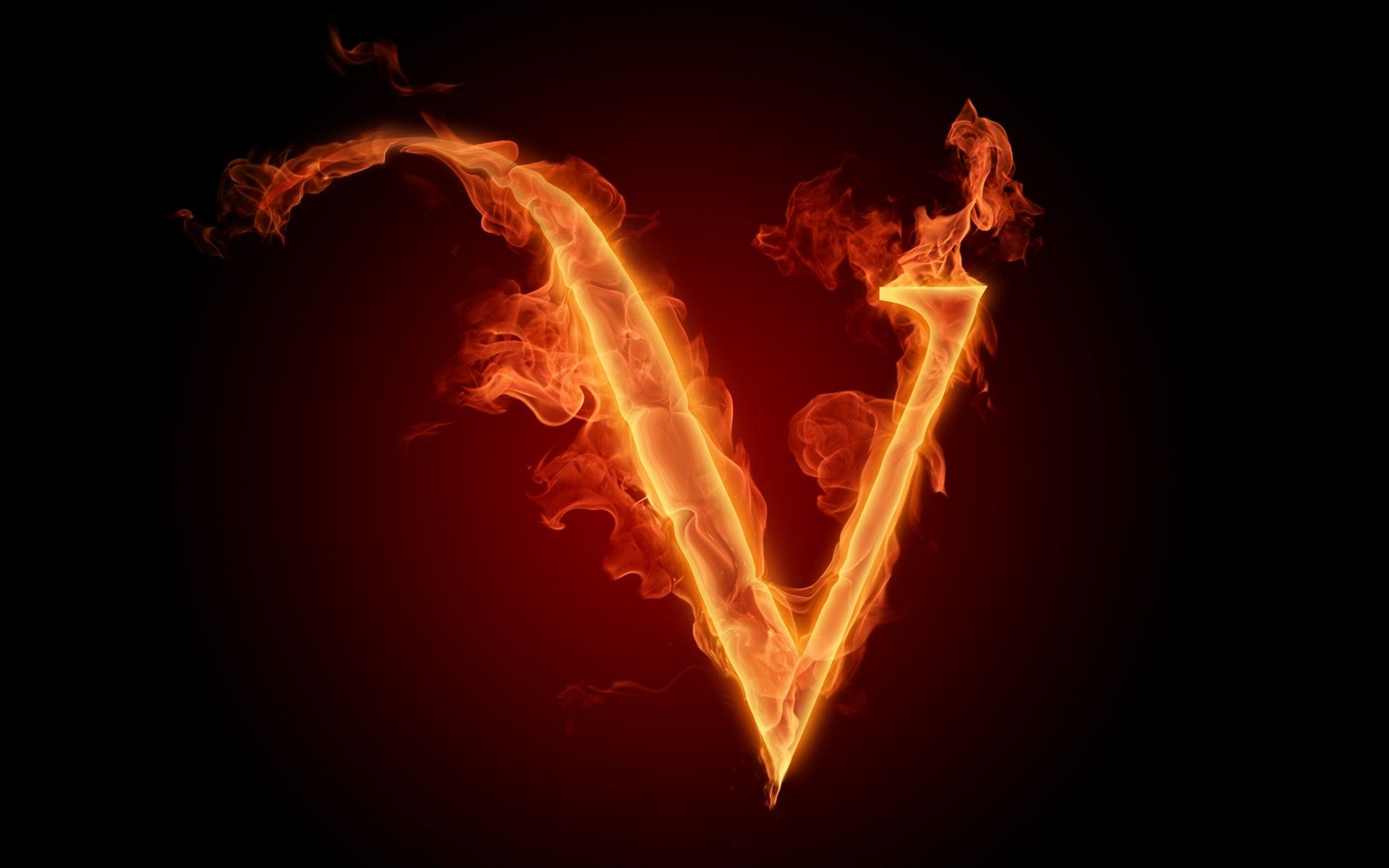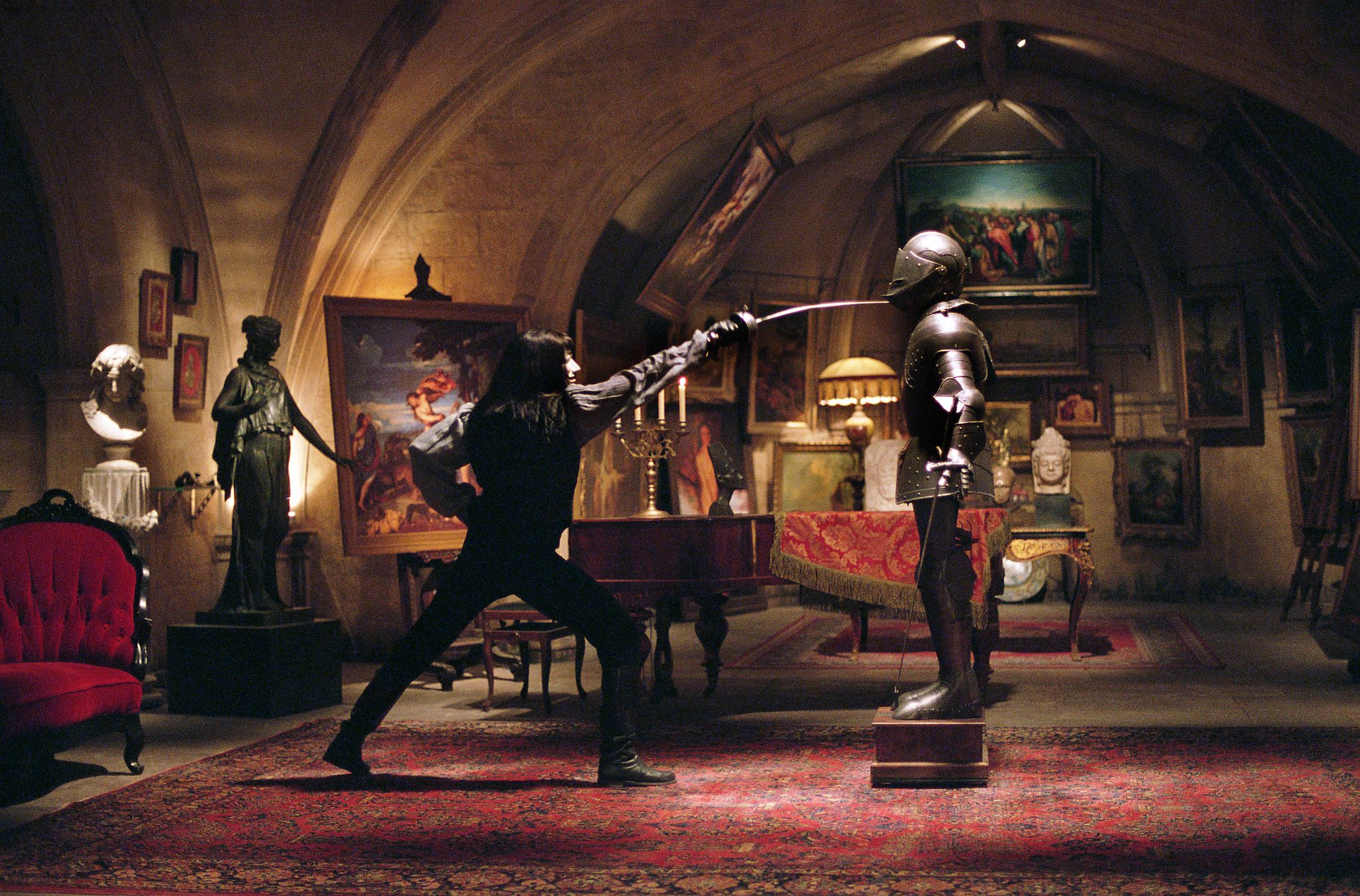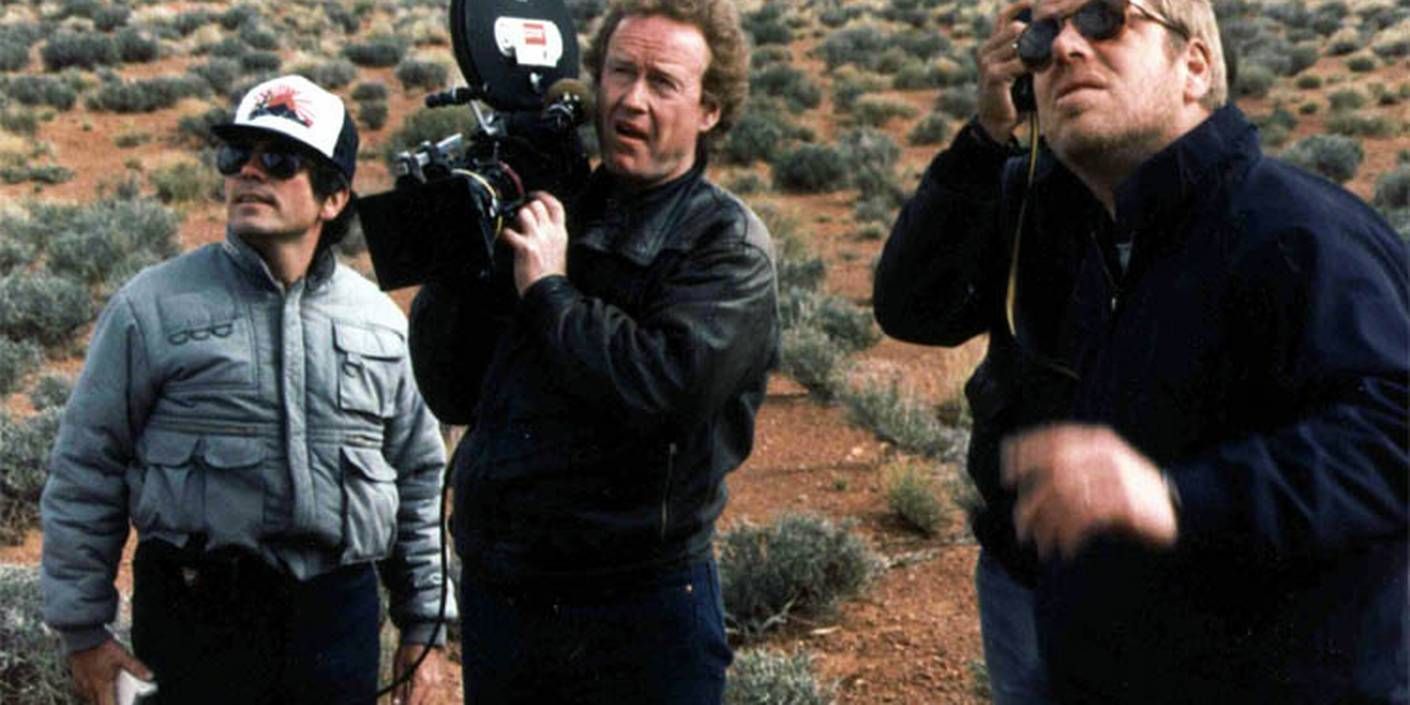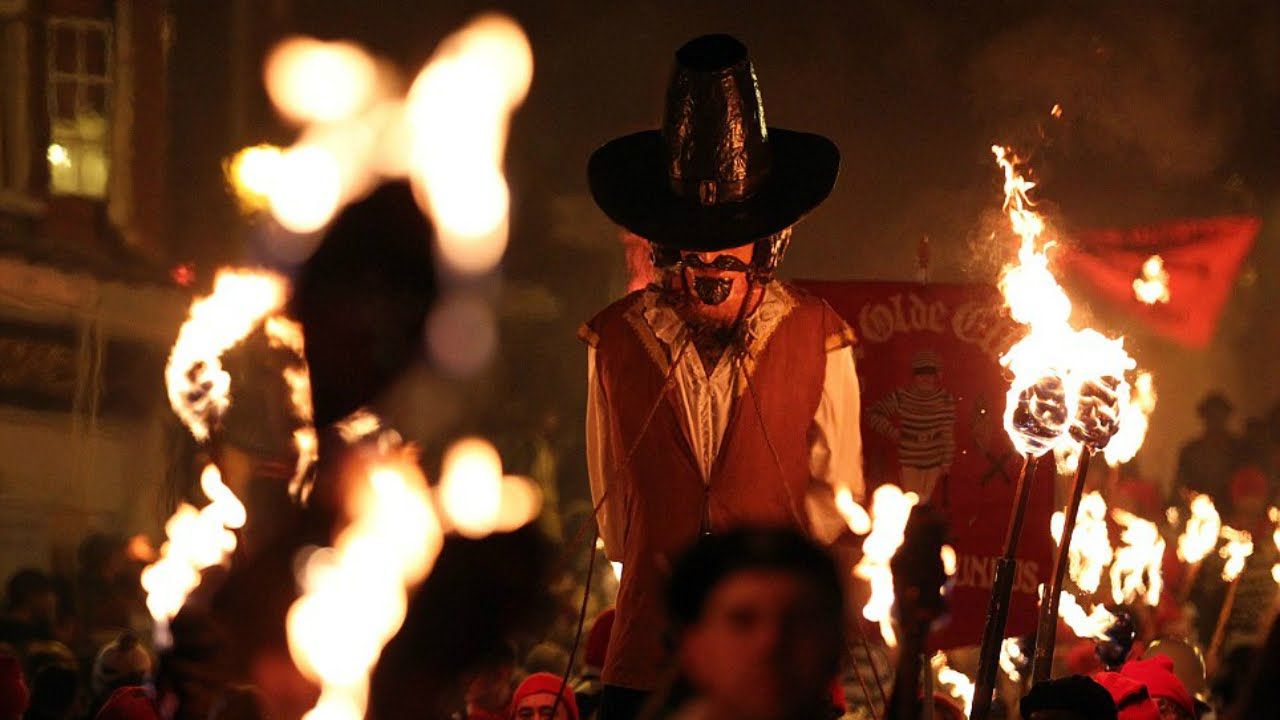Released in 2005, V For Vendetta was a high concept thriller based on the legendary Alan Moore and David Lloyd's graphic novel series of the same name. Set in a near dystopian future where a neo-fascist British Parliament controls a totalitarian England, a masked freedom fighter named V (Hugo Weaving) tries to start a revolution by blowing up parts of London and eliminating political figures. A young woman named Evey (a fantastic Natalie Portman) gets caught up in V's plans as Scotland Yard Detective Eric Finch (Stephen Rea) tries to stop the masked hero from causing more chaos. The film was very much about rising up against oppressive governments and illustrated what it's like when the government rules the people and uses its power to help only those who are wealthy or in high positions in life. Very similar to how things are at present.
Although it made a big impact during its first weekend on the big screen, V For Vendetta quickly fell away after reviews were middling and writer Alan Moore refused to be associated with the project. Thankfully the film found an audience on DVD and has gone on to become a cult favorite.
As with any film of this nature and scale, the production of V For Vendetta was full of secrets and on-set antics many people are unaware of. From the film's long and storied path from comic to script to film through to protests during the film,s releases, there are many hidden facts about the film that most fans aren't aware of. This article will look at 25 secrets about the film and hopefully enlighten you on some of the on-set going ons and mysteries surrounding the film.
25 A Totally Rad Idea
After its release in 1988, V For Vendetta was highly praised by critics and comic book lovers, continuing Alan Moore's hot streak. As has become a regular thing with his work, Hollywood quickly came calling and wanted to produce a film based upon the series. For his part, Moore did his best to distance himself from any recreation of his work. The first crack at writing the screenplay surprisingly went to Hilary Henkin, whose biggest success to date was the Patrick Swayze classic Road House. Henkin's script was apparently a little too over the top for most studios. It was said to have ditched the majority of the major themes seen in the comic with a 1993 article by the Los Angels Times describing the script as "Les Miserables meets A Clockwork Orange."
The script entered development heck for over 10 years as it went through various changes from different writers as multiple studios passed. At one point, actor Kenneth Branagh was attached to direct but he soon fell by the wayside like so many others before him. Eventually, the Wachowski siblings got involved and the film finally went into production in 2005 and was released the next year to a mixed reception.
24 Before The Matrix
As described above, V For Vendetta was lost in development darkness for a decade as multiple studios passed on the wacky script by Hilary Henkin. It wasn't until the script fell into the hands of the Wachowski siblings that the ball finally started to roll on turning the comic series into a film. Lana and Lily Wachowski acquired the rights to the film in the late 90s and set about writing their own version of the series. Ditching Henkin's script, the duo adapted V for a modern audience, writing a script that was much closer to the original source material while incorporating modern events. They were both big fans of Moore's work and the story and wanted to keep the film as close to his original idea as possible.
With the script completed and ready to film the Wachowski's put it on the back burner when their passion project The Matrix got the green light. This film quickly consumed their every waking hour and V was pushed to the side as the siblings shot not only The Matrix but its sequels, The Matrix Reloaded and The Matrix Revolutions. Although they really wanted to make V after the time and energy spent on The Matrix trilogy the Wachowski's wanted a break from directing and decided to offer the script to little known Australian James McTeigue.
23 Not A Fan Of The Film
Alan Moore has been responsible for some of the best graphic novels and comic series of the past forty years but if there's one thing the bearded genius isn't keen on it's his work being adapted for the big screen. After adaptations of From Hell and The League of Extraordinary Gentlemen turned out to be horrible and hard to watch, Moore made it clear to everyone he wasn't keen on his property being turned into large-scale film projects. When he discovered V For Vendetta was next in line for a makeover, Moore was extremely outspoken about his thoughts on the film and surrendered all the money he made from the film to illustrator David Lloyd, who was happy with the final results.
When V was finally released, Moore was quite vocal in his hatred for the film and the way the producers had "Americanized" his ideas.
Speaking with MTV about the screenplay for V, Moore didn't hold back. "[The movie] has been turned into a Bush-era parable by people too timid to set a political satire in their own country. ... It's a thwarted and frustrated and largely impotent American liberal fantasy of someone with American liberal values standing up against a state run by neoconservatives – which is not what the comic V for Vendetta was about. It was about fascism, it was about anarchy, it was about England." It's safe to say Moore wasn't a fan of the final product.
22 Character Changes From The Comics To The Film
While Alan Moore's main problem with the film adaptation of V For Vendetta had to do with the themes of his story being dulled down and changed, he probably wasn't too happy about the changes the Wachowski siblings made to the characters in the script. V is the story's main protagonist and a number of changes were made to his character. In Moore's graphic novel series, V is a brutal anarchist willing to do anything to bring down the government, ending anyone who gets in his way and carrying out terrorist attacks without any remorse for those caught in the crossfire.
The film version of V is much more sympathetic and a romanticized version of the character, portrayed as a freedom fighter who struggles to deal with the moral dilemma of taking another human's life. Even though you can't see his face, Weaving manages to infuse V with a warmth and moral ambiguity, whereas the print version has no qualms about bombing locations and people. V's relationships with other characters also differs in the film, with Finch's begrudging acceptance of what V is doing and why not realized in the comic. Instead, he's a man at the point of breaking who takes illicit substances to help get inside the mind of V so he can find him and stop him before it's too late. V's contact with Evey is also different with the revolutionary more humanized in his interactions with Evey in the film.
21 Natalie Portman Not The First Choice For Evey
Despite having kicked off her film career with the one-two punch of Leon: The Professional and Heat, Natalie Portman was still a fairly small time actress when she secured the role of Evey Hammond in V For Vendetta. The role gave her top billing for the first time in her career and was a massive push towards her becoming a leading lady. Although she earned the role with a great audition she wasn't the initial choice for the role with a number of talented actresses trying out for the part. Bryce Dallas Howard (Jurassic World, Gold, The Twilight Saga), Scarlett Johansson (Lost In Translation, Her, Don Jon), and Keira Knightly (Love Actually, Domino, Atonement) all auditioned to play Evey but ultimately Portman won out.
Director James McTeigue had previously worked with her on George Lucas' Star Wars prequel Attack Of The Clones. Recognizing her talents he was keen to work with her in the future, and when he got his chance to direct V she was one of a variety of actresses he was happy auditioned for the role. Although up against some fantastic talent Portman was eventually awarded the role, and re-watching the film now it's hard to think of anyone else who could have done such a wonderful job.
20 James Purefoy Replaced By Hugo Weaving
When it came to casting the title character, V, the man who got the nod was English actor James Purefoy. Best known for roles in films Solomon Kane and A Knight's Tale and television series The Following and Rome, Purefoy has been a mainstay in Hollywood for a number of years without ever transitioning to a big-time lead actor. Despite this, he's quite capable and has a screen presence, although this didn't help him when it came to V.
There are differing opinions as to why Purefoy left the production after only six weeks.
In an interview with Total Film, Purefoy put to bed rumors about him not wanting to wear the mask and explained it was "genuine creative differences" that led to him leaving. Another publication cited producer Joel Silver as the cause for Purefoy's absence, claiming the actor did not have a "dynamic enough presence" to play the masked anarchist. Whatever the reasons were for Purefoy leaving it enabled Aussie actor Hugo Weaving the chance to play V. After meeting Weaving during his time on The Matrix, McTeigue was more than happy to have him on board, and if you've seen the film you'll no doubt agree he does a bang-up job.
19 Natalie Portman Studied Hard For The Role
Although she played a fictional character in the film, Natalie Portman's commitment to Evey Hammond went above and beyond the role. Portman did a heap of research on the themes present throughout the film, focusing on books and films about radicals, anarchic behavior, and fascist movements. She watched various films, including the documentary The Weather Underground (2002), about the late 1960s/1970s American radicals, and read a ton of books about the themes found in V For Vendetta.
The autobiography of former Israeli prime minister Menachem Begin, who was shaped by his imprisonment by Soviets, Antonia Fraser’s Faith and Treason, a book on the Gunpowder Plot of 1605, and various other biographies on Guy Fawkes and his conspirators became part of her everyday reading. Not only did Portman study in depth for the role but hired a vocal coach to help with her English accent she used during the film. Portman enlisted famed Hollywood linguist Barbara Berkery to school her on the English accent and I think she does a pretty good job capturing the sound of the English. This type of dedication to her craft is just one of many reasons why Portman's so well respected in the industry amongst her peers and fans alike.
18 Guy Fawkes Wasn't The Hero We Think He Was
Throughout history, Guy Fawkes has been used as the symbol for post-modern anarchism, with his mask the sign representing the struggle of the downtrodden rising up against those who beat them down. In reality, Fawkes was just one of many involved in the plot to assassinate King James I and help restore a Catholic monarch to the throne who suffered terribly for his crimes.
Growing up as an English Catholic during the reign of Protestant Queen Elizabeth I, Fawkes left his homeland and traveled to Spain. Here he fought on the side of Catholic Spain against the Protestant Dutch during the Eighty Years War. During this time he met Thomas Wintour and the two made their way back to England. Once home, Wintour introduced Fawkes to Robert Catesby, the man who planned on eliminating King James I. The conspirators stockpiled a large amount of gunpowder to use in the life-ending attempt and Fawkes was put in charge of guarding it. Unfortunately for him, he was caught and after three days of torment eventually confessed to the plan. He was to be hung on January 31, 1606, but fell from the scaffolding and perished of a broken neck. Fawkes was far from the mastermind of the plan and more of a pawn who failed at his one job but has become synonymous with the plot and forever remembered for his part in it.
17 James McTeigue's Directorial Debut
When Aussie James McTeigue was given the chance to direct V For Vendetta, he wasn't overly well-known outside of Hollywood but had earned a reputation as an assistant director on a number of high profile films. Beginning his career as a production assistant, he graduated to the role of second assistant director on the Australian feature film The Girl Who Came Late. His big break came when he was chosen as the assistant director on the Ray Liotta prison escape flick No Escape (also known as Escape From Absolom) and big-budget video game adaptation Street Fighter. This led to work on science fiction film Dark City and The Matrix trilogy where he was given the first assistant director role after his friend was forced to drop out.
Impressed with his work, the Wachowski's offered McTeigue the chance to direct V For Vendetta as his first film.
Since then, McTeigue has had a varied directorial career, being the man calling the shots on big-budget action film Ninja Assassin, fictional Edgar Allen Poe story The Raven, and spy flick Survivor. He's also dabbled with television, directing episodes of Sense8 and Marco Polo. At one time he was linked to the new Superman film but lost out to Zack Snyder.
16 Security Was Extra Tight During Filming
These days security is extremely important when it comes to filming but even a decade ago it was a big deal when a film the scale of V For Vendetta was being made. Everyone involved with the film, from the actors to the crew, where subject to background checks and daily security checks when they entered filming locations. As V used a variety of weapons and featured a number of explosive devices, the special effects team routinely checked all their materials to make sure nothing went wrong during filming. Add to this the locations in the film and planning security for V must have been a nightmare.
The crew shot a number of scenes in and around Parliament and Big Ben and these shots could only be done during the early hours of the morning. Even then the crew didn't have a great deal of control over traffic conditions and people trying to get a peek at what was going on, so security was beefed up to make sure there would be no trespasses or people interfering with the landmarks involved in the filming. With the world still recovering from the September 11 attacks just some five years before, everyone was on alert for any danger, but things went smoothly and no incidents were reported during the film shoot.
15 Permission Granted To Close Downing Street
Along with Parliament and Big Ben, another well-known London location featured in V For Vendetta. The famed Downing Street featured in the flick and it took producers a long time to get permission to film there. Located off Whitehall in central London and just a few minutes from the Houses of Parliament, Downing Street is the official house of the Prime Minister and the Chancellor of the Exchequer. It's a heavily guarded area and has appeared in a number of films over the years, although getting permission to film there is no easy task.
Production notes from Warner Brothers detail how it took nine months of negotiations with 14 different government departments for filmmakers to get the opportunity to film a few minutes in the location. The production was granted three nights of filming between midnight and five in the morning to get the shots they needed. As you can imagine, the security was even tighter than normal during these three nights, with not only the film security on hand but dozens of government agents on set to make sure nothing went wrong. The pressure during filming must have been crazy and you wouldn't want to make any mistakes with the limited time available, but it seems all went well and the crew got what they needed.
14 The Film Was Shot Mainly In Germany
V For Vendetta was set in a futuristic England but many people aren't aware the majority of the film was actually shot in Germany. While previously mentioned locations such as Parliament, Big Ben, and Downing Street were all shot in London, the rest of the film was shot in studios located in Germany. It's believed producer Joel Silver sent the film over to Germany to film as it was much cheaper than London and enabled the film to feature better special effects. Scenes from the film featuring the "Shadow Gallery" were filmed at Babelsberg Studio in the Berlin suburb of Potsdam.
The studios have been home to many great films, including the classic German productions Nosferatu (1922) and Metropolis (1927). In an interview with The A.V. Club actor John Hurt, who played High Chancellor Adam Sutler, explained he found it "hard" being filmed playing an Adolf Hitler-type character in the middle of Berlin. Despite that, he did a tremendous job as the fanatical Sutler and was one of the key characters in the film whose acting was second to none. Hurt is one of those actors who makes any film he is in 27% better, and V For Vendetta was certainly a film blessed by his presence.
13 Hugo Weaving Had To Perform His Lines Twice
As far as Australian actors go there are few who have transitioned into Hollywood as effectively as the tremendous Hugo Weaving. Carving out a career playing extraordinary characters over his career, including Agent Smith in The Matrix trilogy, Elrond in The Lord Of The Rings and Hobbit, and the Red Skull in Captain America: The First Avenger, his portrayal of the mask wearing V was another notch in Weavings already impressive career. Stepping in for James Purefoy after he dropped out of the role the enigmatic Weaving ran into a little trouble while wearing the mask.
It turns out trying to recite his lines wearing the mask was a bloody tough job, with his words coming out mumbled and hard to hear.
A new mask was designed with an inbuilt microphone to pick up all of Weaving's lines but for some reason this didn't work, forcing Weaving to rerecord all his lines from the film after it was completed. Not only did he have to recite his lines but also those spoken by Purefoy, with the footage he shot still used in the final film. While many actors might have had a tantrum or complained about the extra work, Weaving was a true professional who got on with the job and happily recited his lines all over again for the betterment of the film. Not only is he a fantastic actor but an all round nice guy.
12 Real Tanks Used During Filming
During the Parliament Square scene in V For Vendetta you'll notice two tanks are part of the shot. These are actual decommissioned tanks once used by the British army. As previously mentioned in this article security was crazy tight during filming and the tanks had to undergo rigours testing and checks before being allowed on set. Every night before filming the tanks underwent a special inspection by government security personal to double check the tanks were in fact non-operational. It might sound like they were going to extremes but considering the damage a tank can do and the locations they were being used it's understandable the government were a little weary.
The tanks were transported by trucks to the filming locations and escorted by extra security officers. No stops were allowed during the transportation of the tanks, even if one of the drivers really needed to go to the toilet. It all sounds a little over the top but when you take in to consideration the locations and damage a weapon such as a tank can produce it makes sense everyone would be on their toes. Thankfully there were no dramas during filming and everything ran smoothly.
11 It Took Over 200 Hours To Build The Domino Set
V For Vendetta featured a number of theatric set pieces and hard to shoot scenes during its runtime. From energetic fight scenes to massive explosions, V was full of fast paced editing and action packed shots. What might surprise you was the hardest scene to shoot was in fact the domino scene. In the film we see shots of V's plan coming together intercut with a visual of him setting up hundreds of red and black dominos that fall down and form his symbol.
The scene used over 22,000 dominos and had to be setup by four professional domino assemblers. It took them over 200 hours to set the scene, with the shot being filmed several times to get multiple angles of dominos falling. Production notes from Warner Brothers detailed how nervous everyone was when the shot was ready to be first filmed. "Tension was palpable on the set the day the scene was filmed, lest anyone’s footsteps or voice tumble the dominos again. Loud gasps were heard when an assistant hairstylist dropped her comb while grooming V’s locks as he sat cross-legged at the head of the domino chain. Fortunately, the comb narrowly missed the first piece. The dominoes were then officially “touched off” – and fell into place perfectly."
10 Natalie Portman's Head Shaving Scene
It's hard to pick just one scene from V For Vendetta that stands out above the rest but the harrowing depiction of Natalie Portman's Evey getting her head shaved was one that springs to mind. Watching her being shaved against her will is quite unsettling and Portman does a great job of conveying the humiliation she felt during the process. As there was only one chance at capturing this moment the scene had to be filmed in one take, with director James McTeigue setting up three cameras to capture the event. Speaking about the scene to USAToday Portman explained, "It was a one-shot deal, and that was the most stressful thing about the experience." After having her head shaved, Portman expressed how happy she was to lose her locks, apparently having wanted to try out the bald look long before signing on for the flick.
Of course Portman isn't the first actress to undergo a radical haircut for a film role, with the likes of Demi Moore (G.I. Jane), Sigourney Weaver (Alien 3), Cate Blanchett (Heaven), and Charlize Theron (Mad Max: Fury Road) all getting their locks chopped off during their careers.
9 The Letter V
While watching V For Vendetta you might notice the letter V and the number 5 (V is the Roman numeral for 5) scattered throughout the film. Well, this was an intentional ploy by director James McTeigue who filled the flick with subtle references to the letter. Many of them are easy to spot, such as the fireworks exploding in a V sign or the flags set up as Vs behind the elderly people playing chess. But McTeigue hid many other Vs throughout the film you might not have picked up on.
When Natalie Portman's Evey wakes up in V's dungeon she has a small cut on her head in the shape of a V.
When shots of the television host are shown, the hands of the clock in the background always show a time that creates a V. During the final fight scene, V throws two daggers that cross over each other and form a V while Creedy fires five shots at V who leaves a V-shaped bloodstain on the wall. If these seem obvious then how about these instances concerning characters names. Evey contains the letter E which is the fifth letter of the alphabet, V is the fifth letter if you're counting backward, and Y is the 25th letter (five squared). Then there's Finch, whose name contains five letters or Creedy, who happens to have a name containing E and Y and when he's attacked by V, Beethoven's 5th symphony is playing in the background. There are dozens more hidden throughout the film and I challenge you to find as many as possible as it's bloody hard work.
8 Filled With References To Anarchy And Famed Philosophies
If you thought it was only letters and numbers strewn throughout V For Vendetta, I'm here to tell you there were loads more secrets hidden in the film's background and dialogue. Although the film veers from Alan Moore's original theme of heavy-handed anarchy for a more freedom fighter type narrative, the film is still littered with subtle references to anarchy and similar theories. The most obvious is the use of the [Redacted] Pistols throughout the film. The 1970s punk band were all about causing anarchy and upsetting the system, with the score to V sampling the band, including their smash hit "Anarchy In The UK."
The film also includes quotes and images from famous thinkers throughout history. A quote by American feminist-anarchist Emma Goldman is paraphrased by V during his dance with Evey while his library in the Shadow Gallery includes artwork by existentialists Friedrich Nietzsche and Sir George Frazer. The film is like a moving homage to great thinkers and speakers over the year's who have stood up for their beliefs and not been shut down by the system. Even if Alan Moore wasn't happy with the way the film turned out you'd hope he would at least acknowledge all the references director James McTeigue put in the film. Then again, considering how grumpy Moore was when the film was released it's probably not likely.
7 The Final Film For Cinematographer Adrian Biddle
If you've seen V For Vendetta, and I assume you have if you're reading this article, you'll no doubt have been in awe of the cinematography seen in the film. The way V is shot and edited is wonderfully bleak and captures the dystopian future in a mesmerizing and unforgettable way. Oscar-nominated cinematographer Adrian Biddle was the man responsible for the look of the film and did a tremendous job.
A talented swimmer as a youth, Biddle first entered the entertainment industry when he was hired as an apprentice by underwater photographer Egil Woxholt and did uncredited work on the James Bond flick On Her Majesty's Secret Service and Murphy's War. He got his big break in Hollywood when he hooked up with Ridley Scott's advertising company R.S.A. and followed Scott into films, with his first official gig being on James Cameron's Aliens. He went onto work on 25 different films during his career, including The Princess Bride, Willow, The Mummy, and Reign Of Fire. V would end up being his final film with Biddle passing away from a heart attack in December 2005, with V being released in the US on March 17, 2006. Despite his passing, Biddle had a massive impact on the film industry and was involved with some of the best films of the past four decades and won't be forgotten for his contribution to film.
6 Film Originally Meant To Be Released On Guy Fawkes Day
Considering V wears a Guy Fawkes mask and the many references to the Gun Powder plot, it's not surprising to learn producers wanted V For Vendetta to be released on Guy Fawkes Day. Even the trailer promoted this, with the voiceover reminding us to "remember, remember, the 5th of November." For me, this was never going to be a problem for my girlfriend at the time of the film's release was born on November 5th, but that's an entirely different story. Despite the advertising, V was pushed back due to problems that arose during post-production. Although these problems were never clarified, many people speculated the film's delay was because of the London bombings that occurred during July that claimed the lives of many civilians.
The film was eventually released in America over St. Patricks weekend in 2006.
The long delay in the film's release didn't deter fans from turning out in droves to catch it at the cinema, with V making over $25 million during the first weekend. It was also the number one film that same weekend and received mixed reviews from critics, although it went on to gain a cult following when released on DVD and is a favorite amongst Portman fans.

